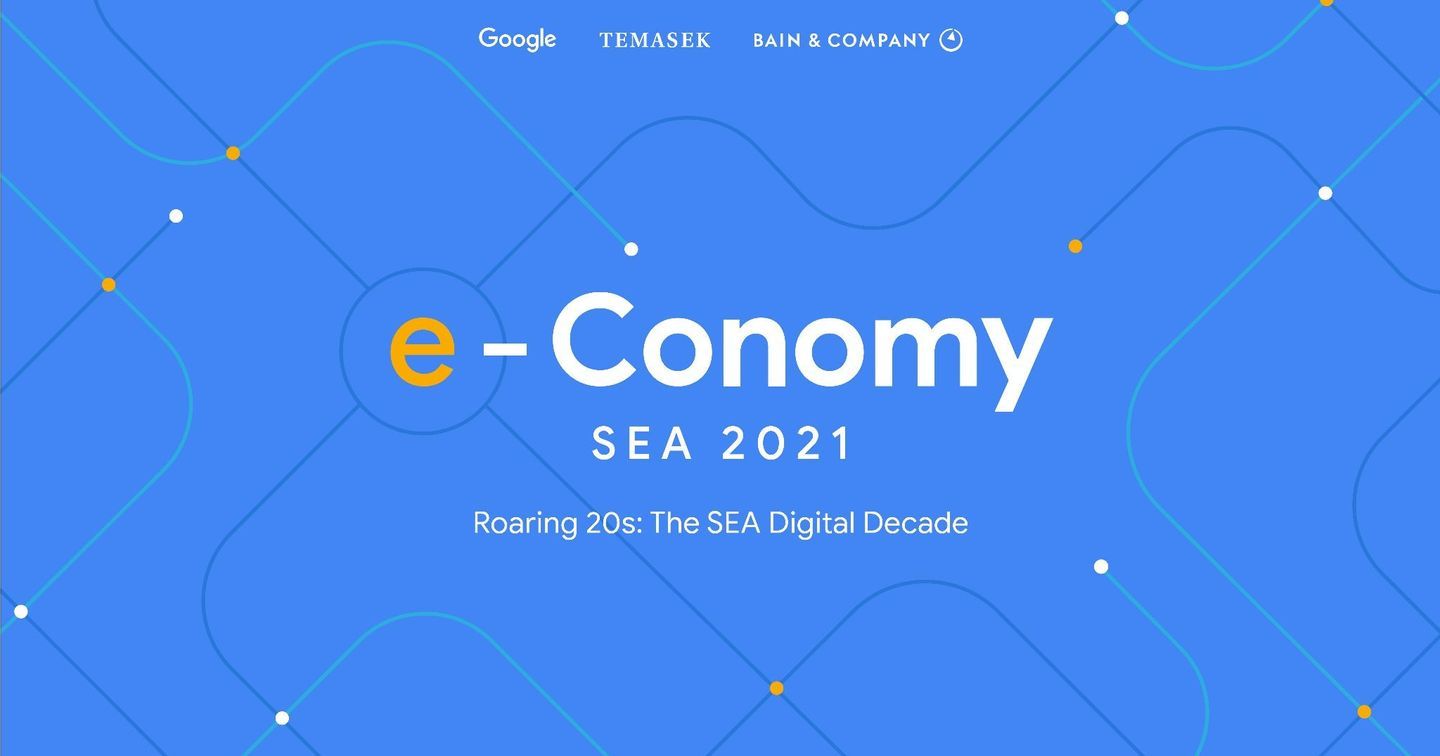Vietnam’s digital economy is projected to hit $220 billion in GMV by 2030, placing the country second only to Indonesia in the region. This year, Vietnam’s digital economy is expected to grow by 31% to US$21 billion - bolstered by a 53% YoY growth in e-commerce despite the shrinking online travel market - and hit US$57 billion by 2025. The insights were reported today at the launch of Google, Temasek and Bain & Company’s sixth edition of the e-Conomy Southeast Asia (SEA) Report - Roaring 20’s: The SEA Digital Decade.
Since the start of the pandemic through the first half of 2021, Vietnam has seen eight million new digital consumers with more than half of them coming from non-metro areas. Pre-pandemic digital consumers have used an average of four more digital services since the pandemic began, while overall 99% of Vietnam digital consumers intend to continue using online services going forward; indicating an overall stickiness in digital adoption.
In the report’s inaugural section on Southeast Asia’s small and medium enterprises, one in three of the country’s digital merchants, believe they would not have survived the pandemic if not for digital platforms. In Vietnam, Digital financial services are also becoming critical enablers, with 95% of digital merchants now accepting digital payments and 67% adopting digital lending. Further, 7 out of 10 digital merchants expect to increase their usage of digital marketing tools in the next five years.
Vietnam remains an attractive innovation hub as global capital continues to pour into the country as deal activity skyrocketed in the first half of 2021 to hit a record high of $1.37 billion, surpassing full year investments of recent years fueled by interest in digital services startups in e-commerce, fintech, healthtech and edtech.
“Through the pandemic, I have witnessed first-hand how resilient the people in Vietnam are and how they can become fast and creative adopters of new technologies. This freshly adjusted forecast on Vietnam's internet economy by 2030 shows us the great potential of the country once Vietnam accelerates its digital transformation. Google's latest projects such as ‘Accelerate Vietnam Digital 4.0' and ‘Coding for the Future' that effectively provided digital skills training, coding sessions for close to one million people in Vietnam is a tangible proof of our commitment in supporting the country on its digital growth journey”, said Tram Nguyen, Google Country Director for Vietnam.
Providing a ten-year outlook, the 2021 e-Conomy SEA report highlights that the region is on the path to become a $1 trillion digital economy by 2030, of which Vietnam could record $220 billion in GMV. Propelled by a fast-growing base of digital consumers and merchants, acceleration in e-Commerce, Food Delivery and Digital Financial Services, SEA is estimated to reach $174 billion in GMV by the end of 2021. This number is further expected to surpass $360 billion by 2025, outgrowing the earlier projection of $300 billion.
The report predicts that SEA, including Vietnam, is entering its ‘digital decade’ as the internet increasingly becomes an integral part of consumers’ daily lives. The region now has more than 440 million internet users, and importantly, 350 million of them are digital consumers, i.e. internet users who have bought at least one online service. Since the pandemic began, SEA has added 60 million new digital consumers, of which 20 million joined in the first half of 2021 alone. Catalyzed by the pandemic, existing digital consumers ventured further into online services, transacting in an average of four new verticals since the outbreak began. Existing users also increased the frequency of use and spend across most verticals. This increased adoption of digital services is showing no signs of reversal and 9 in 10 new users in 2020 continue to use them in 2021.
In the report’s inaugural section on Southeast Asia’s small and medium enterprises, digital merchants are found to have turned to digital platforms to ensure business continuity. Digital financial services emerged as critical enablers, with over 90% merchants now accepting digital payments. In the next five years, 8 in 10 of them anticipate more than half of their supply purchases and sales will come from online sources.
The annual e-Conomy SEA Report sheds light on the internet economy in the region, covering Indonesia, Malaysia, the Philippines, Singapore, Thailand and Vietnam. The report dives into trends across five leading sectors ‒ e-commerce, online media, transport & food, online travel and digital financial services and two nascent sectors - healthtech and edtech. The report also reviews the tech investment landscape across the region and reveals what investors are looking for in the current environment.
Here are some key insights from this year’s report:
1. SEA’s tenacious growth is primarily driven by e-commerce and food delivery
E-commerce is expected to propel the SEA internet economy forward in the next decade. In a strong lead-up to 2030, e-commerce GMV could exceed $120 billion by end 2021 (a near doubling from 2020) with the potential to reach $234 billion by 2025. The food delivery sector emerged as a bright spot, growing 33% y-o-y to reach $12 billion in GMV. It has now become the most penetrated digital service, with 71% of all internet users ordering meals online at least once.
While online travel growth remains muted, it is likely to see a recovery in the medium-to long-term, driven by pent-up demand and vaccination progress. Online media witnessed a healthy 32% growth to $22 billion in 2021. In particular, the pandemic ushered in a new generation of gamers, bringing with them a willingness to spend.
In 2021, all the countries covered in the report experienced strong, double-digit growth. Indonesia contributed 40% of the region's total GMV at $70 billion; while the Philippines led with an impressive 93% growth to become a $17 billion digital economy.
2. A new wave of digital merchants, propelled by the pandemic
1 in 3 digital merchants believe that they would not have survived the pandemic without going online. The research found that 60% use digital tools to enhance operational and back-office productivity, while 90% accept digital payments. Going forward, digital lending services are likely to grow due to an appetite for consumer financing options and supply chain financing. While digital merchants recognize the positive impact of online platforms such as job creation and business opportunities, long-term profitability remains a top concern.
3. Digital financial services see promising growth across all products
Since the pandemic began, digital financial services have seen healthy growth, specifically in the adoption of e-wallets and A2A (account-to-account), fuelled by both merchant adoption and consumer usage.
By 2025, digital payments are forecasted to reach over $1.1 trillion in gross transaction value (GTV), up from a forecast of $707 billion in 2021. Digital lending could see a 50% increase in outstanding balance from $26 billion in 2020 to $39 billion in 2021, led by a rebound in lending appetite and growth in usage of buy-now-pay-later services.
4. Funding resurgence and the race to Initial Public Offerings (IPOs)
Investments in SEA’s internet economy are expected to reach an all-time high in 2021. Deal value came up to $11.5 billion in the first half of the year, surpassing the $11.6 billion for the entire 2020. Investors see SEA as a lucrative investment destination for the long-term, especially in sectors such as e-commerce and digital financial services, which continue to attract the majority of investments (more than 60% of deal value). Increased deal activity and larger valuations that led to bigger funding rounds have spurred the induction of 11 new consumer technology unicorns in 2021, bringing the total number to 23. More tech companies are exploring IPOs as viable pathways to raise capital or allow early investors to monetise their holdings, especially in view of strong valuations and novel listing approaches such as special purpose acquisition companies (SPACs).
5. Healthtech and edtech continue to show promise
Healthtech and edtech continue to be nascent sectors to watch. Healthtech is seeing strong investor interest as consumers are increasingly embracing convenience and accessibility. While edtech has shown healthy growth potential, many investors are taking a ‘wait and see’ stance, as scalability remains unclear.
6. Drivers and enablers of a $1 trillion GMV internet economy
- E-commerce and online grocery will form a significant part of the region’s digital GMV in 2030. Transport and food, as well as online media, could unlock the next wave of value and contribute as much as e-commerce does today if demand grows beyond the urban markets.
- The internet economies of all six countries will continue to grow rapidly. e.g. Indonesia alone, by 2030, could potentially be 2x SEA’s GMV today, while Vietnam could grow 11x to become a $220 billion digital economy.
- While talent continues to be an unresolved challenge, a set of emerging enablers that require multilateral solutions between consumers, merchants, platforms, and regulators, will drive the growth of SEA’s digital economy. These enablers include a commitment to sustainability, robust and business-friendly data regulation, data infrastructure to support larger and more frequent data flows, as well as an equitable system to protect gig workers and consumer interests while spurring innovation.
“Vietnam’s internet economy continues to attract global capital because of its strong growth fundamentals such as a large base of highly engaged digital users and its growing digital ecosystem of incubators, accelerators and innovation labs,” said Rohit Sipahimalani, Chief Investment Strategist; Head, South East Asia, Temasek. “We look forward to increasing our investments in Southeast Asia’s digital champions, using our capital to catalyse digital solutions and accelerate the economic growth and job opportunities for our local communities.”
“Vietnam holds the potential to become the region's second largest economy at close to $220 billion with strong investor interest and as more of its non-metro populations come online. To accelerate growth in the digital decade ahead, Vietnam must continue to invest in momentum drivers and critical enablers such as digital payments and talent development,” said Florian Hoppe, Partner and Head of Digital Practice in Asia-Pacific, Bain & Company. “We believe increasing penetration of digital financial services and corresponding infrastructure, continued investments in last mile logistics, coupled with the ubiquitous access to internet and structural shifts in consumer and SME behaviours will leapfrog Vietnam's internet economy by 2030.”
























